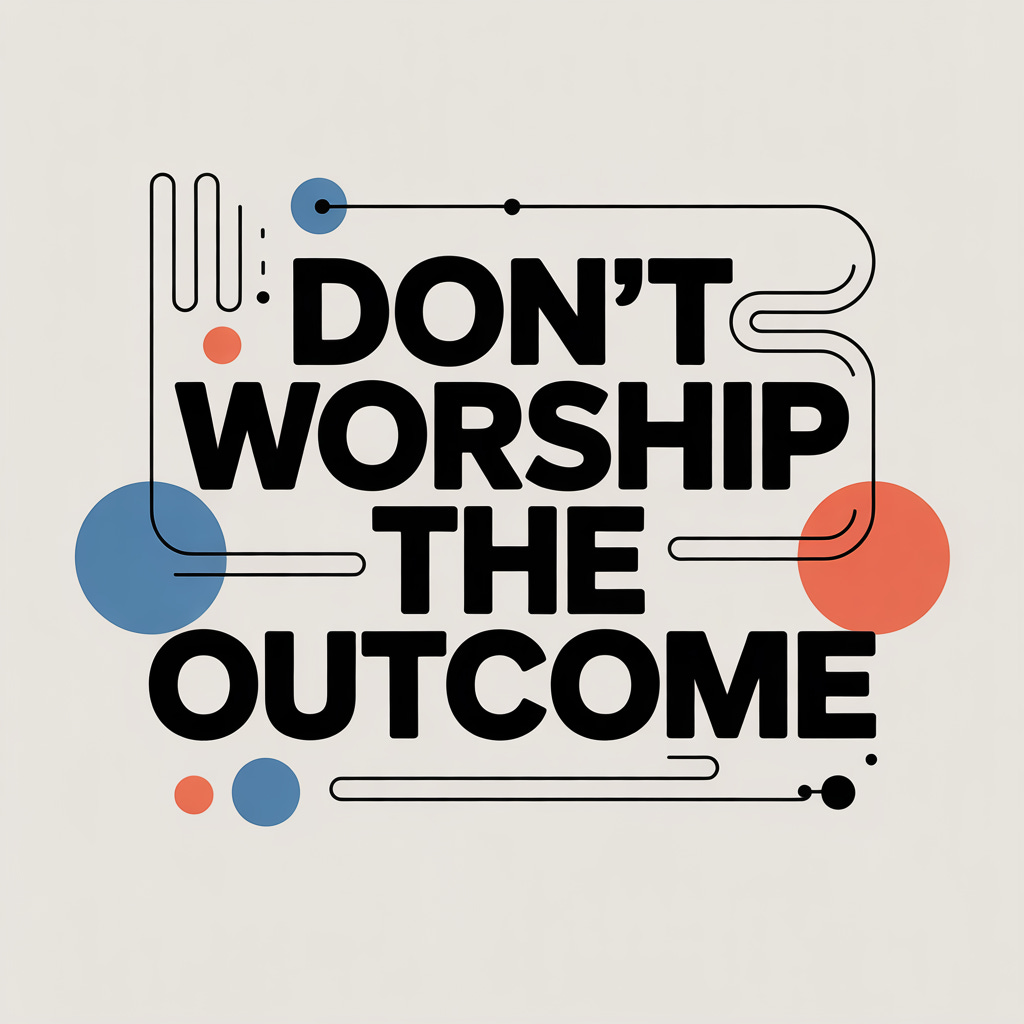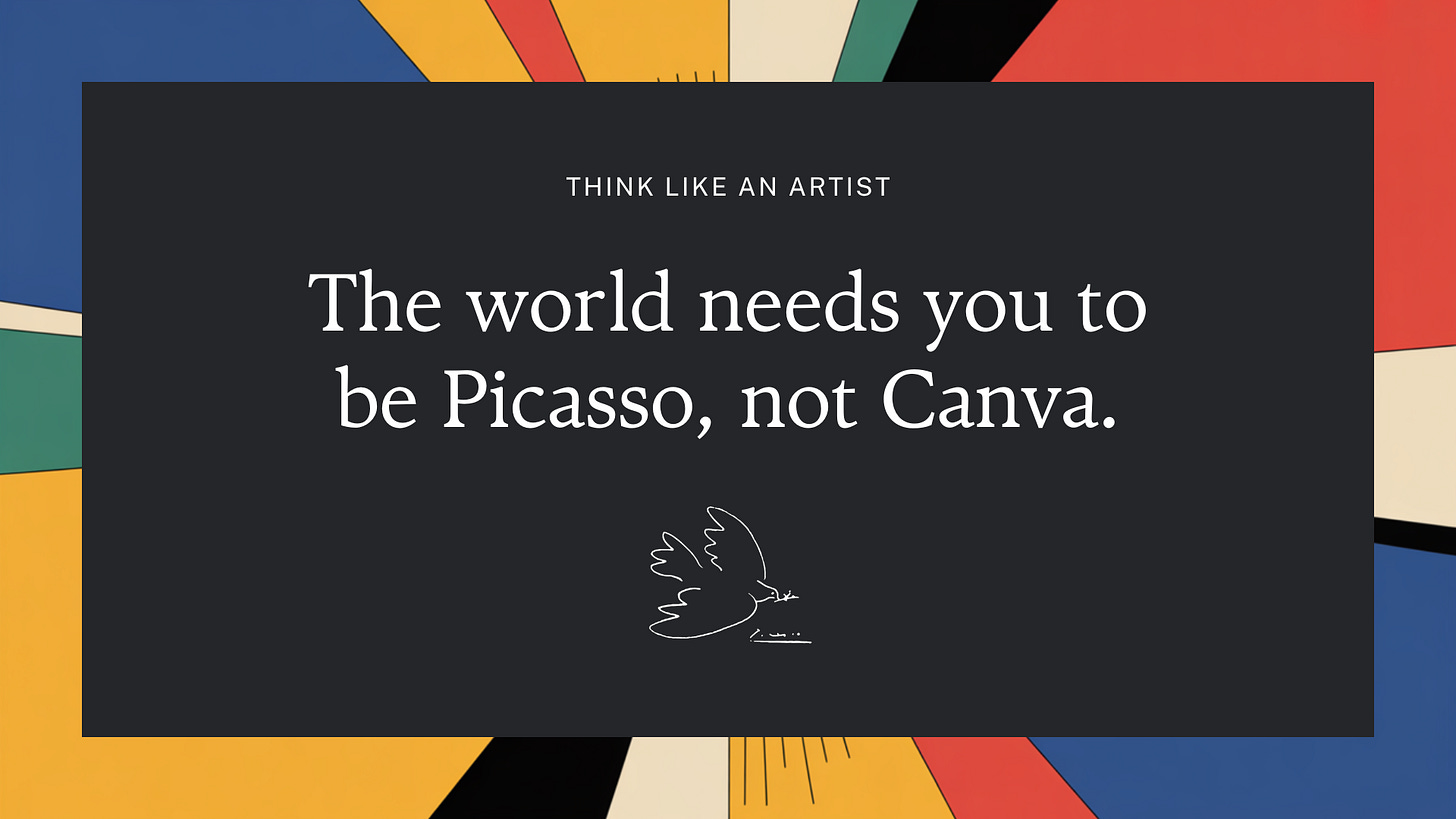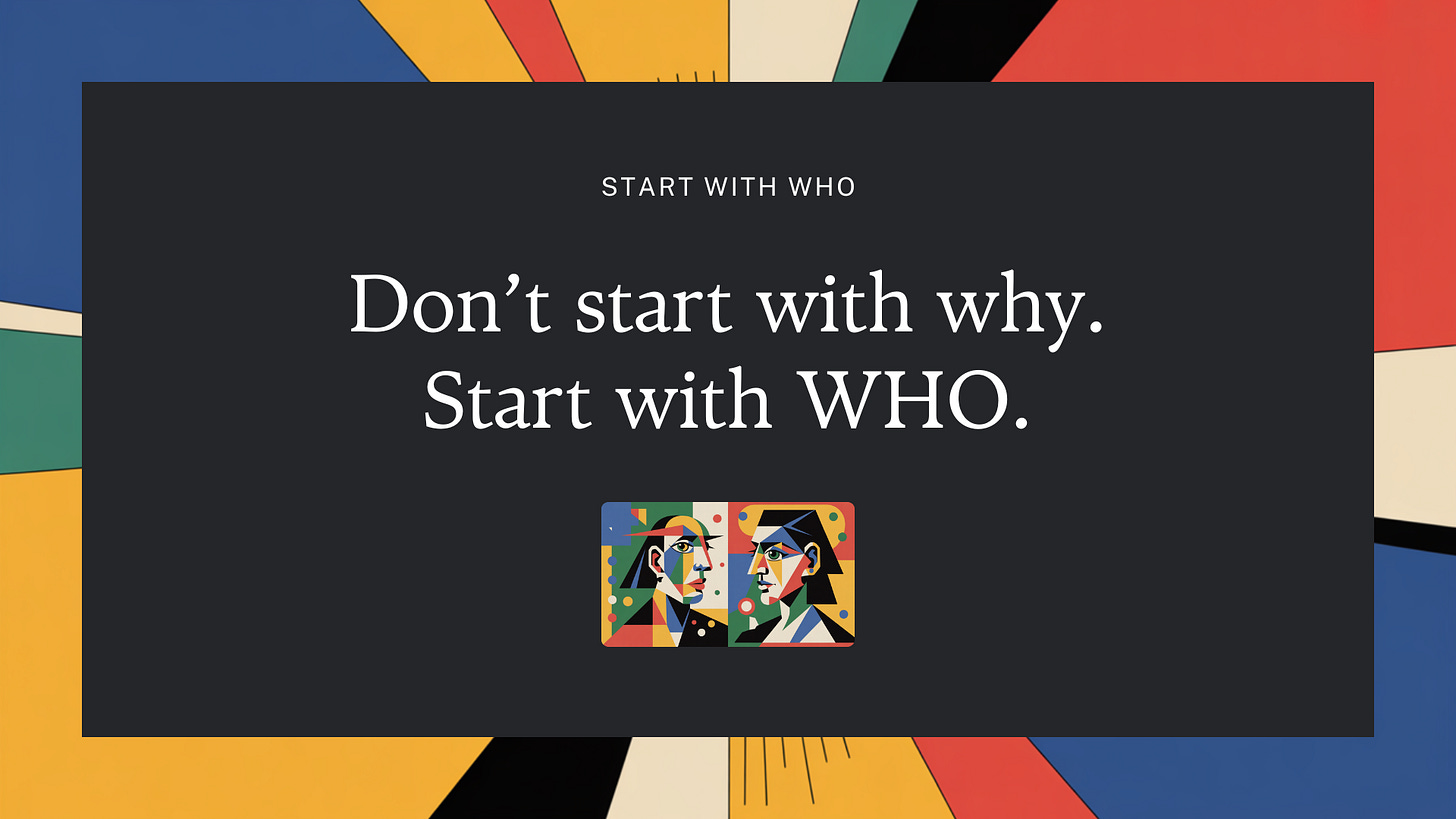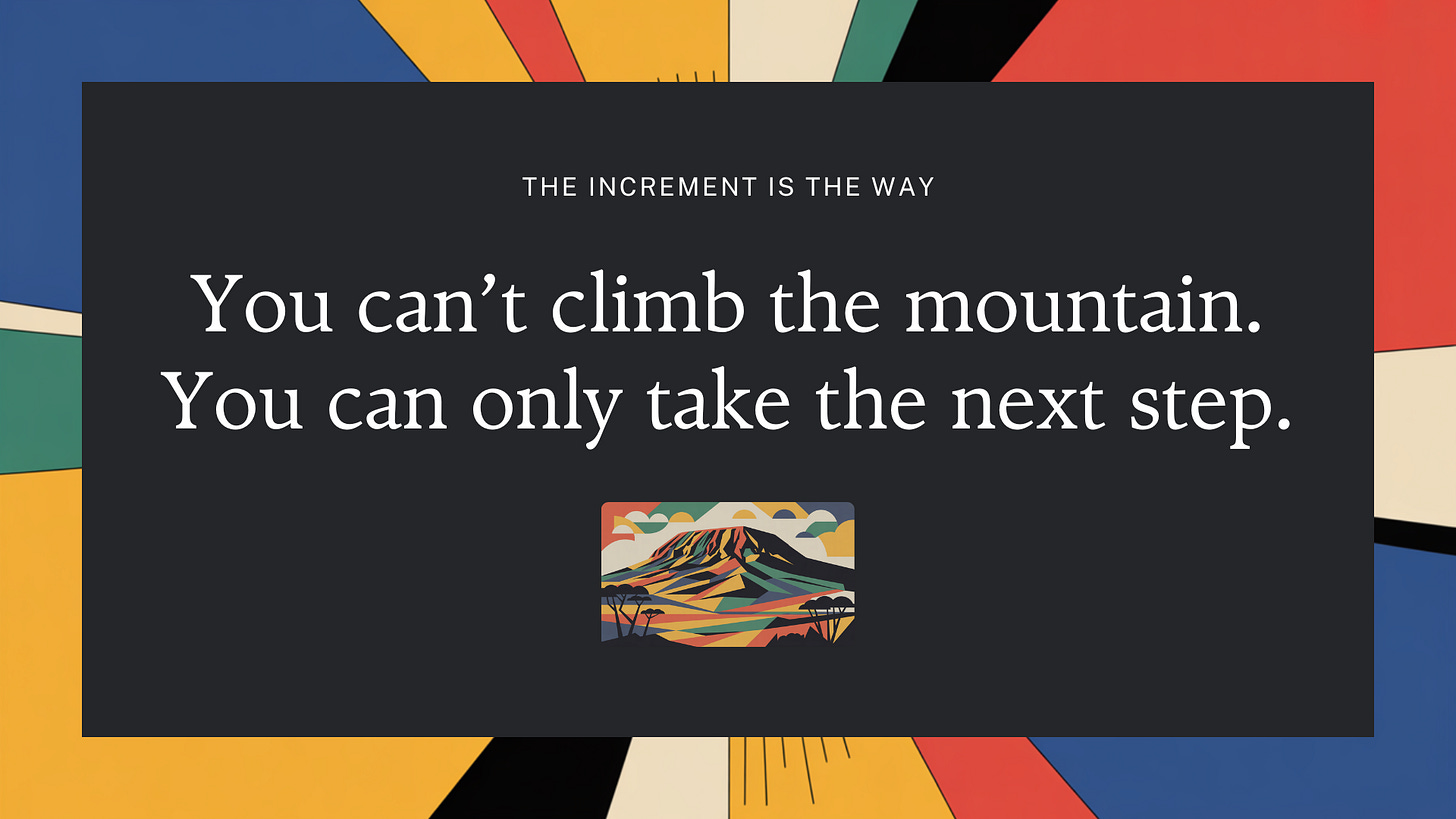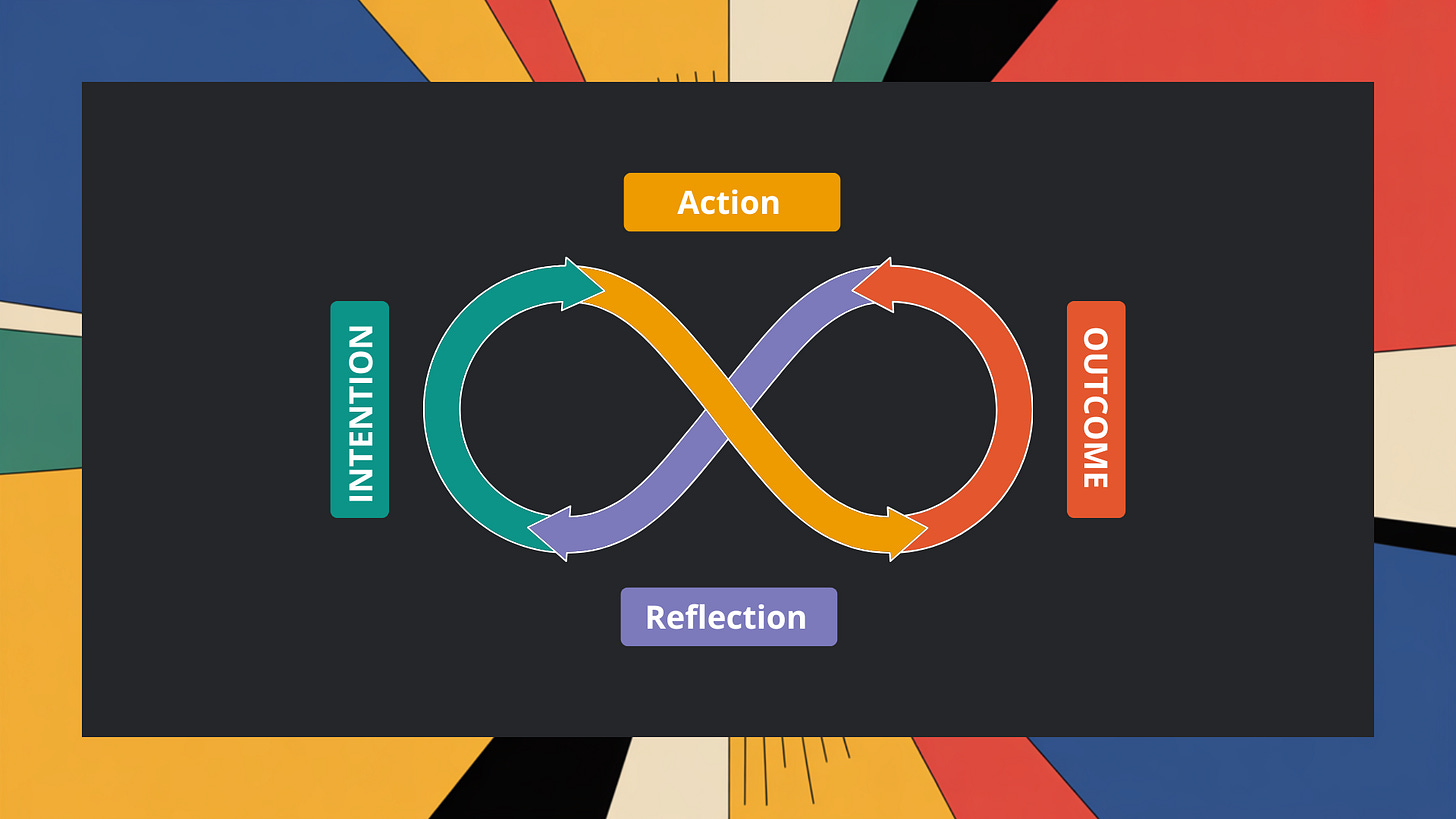How to serve the work
(and not worship the outcome)
I'll be honest: every time I frame something as "a presentation" or "a launch," I tighten up.
I try to sound clever. The ideas get bloated. Instead of sharing what I know with people who'll interpret it their own way, I chase perfection, as if there's a "right" way things should be done.
But when I choose to serve the work instead of the expectations? That's when freedom, momentum, and focus start to flow. And in that flow, I've discovered something surprising: my best work never comes from following prescribed paths. It emerges naturally from paying attention to what actually works, not what I think should work.
This observation sits at the heart of everything I've learned: how we work best is found, not chosen. It's discovered in the trails we leave, the relationships we build, and the quiet patterns that have been asking to be noticed all along.
The Founder’s Noose
We live in a culture obsessed with outcomes. We worship the chart that goes up and to the right, the algorithm hit, the "proven system," the overnight leap. But here's what nobody talks about: this obsession with outcomes isn't just stressful, it's actively destructive to the work itself.
Every great innovation in history came from people who couldn't possibly have known the outcome. Edison wasn't chasing "disruption" when he tested 1,000 filaments. He was serving the work. The Wright brothers weren't building a "transportation revolution." They were solving a fascinating problem.
Yet today, we're expected to predict our outcomes with crystal-ball precision. We call it "strategy," but really it's just fear dressed up in business clothes. This creates what I call The Founder's Noose: Fear → action → outcome → fear → action → outcome → fear... you get the idea.
When fear leads, our actions become distorted. We jump on the next tactic, buy the course, adopt someone else's playbook. Nothing fits our context, results falter, and the spiral tightens.
I've lived this cycle. After my fifth redundancy in a decade, I built with "I need money" energy. Fear drove my decisions, chasing reach instead of building relationships, pushing sales instead of serving needs.
Everything changed when I stopped trying to control outcomes and started focusing on service. People didn't just show up; they stayed.
Or perhaps I finally noticed them.
You can spot the noose in the small things. We buy books we never read because it feels like progress. We sign up for programmes we don't finish. We chase "reach" because it looks like growth. Meanwhile, months pass, we don’t leverage the knowledge we’ve collected, and very little actually changes.
Take a look at your bookshelf. If you picked just one unread business book, binned the rest and and committed to experimenting with the ideas if offered, you’d get more from it than ten new playbooks. It doesn’t even need to be a good book, because the value is in the process, not the outcomes it promises.
Breaking free requires more than different tactics; we need different lenses. And I’d like to offer you three unremarkable practices to disrupt the cycle and help you focus on the work:
Think Like an Artist
Start with Who
The Increment is the Way
Plus: The Unremarkable Growth Loop
Think Like an Artist (when everyone else thinks like a machine)
Most business thinking is machine-like: template-first, control-focused, seeking sameness. Artist thinking is the opposite: process-faithful, context-aware, seeking truth. Here's the stark difference:
Machine thinking asks: "What worked for others?" Artist thinking asks: "What's actually happening here?"
Machine thinking says: "Follow the template." Artist thinking says: "Follow the thread."
This isn't just philosophy; it's practical survival. In an AI-driven world, template thinking becomes worthless overnight. But artistic thinking is a return to the possible. It’s the ability to see what's really there, to notice what could happen to us, for us, and through us.
The key question: "If I hadn't already decided the outcome, what would this situation actually ask of me?".
Start with Who (because 'why' is a trap)
We've all heard "start with why." It sounds right, but there's a problem: in isolation "why" becomes a philosophical trap. We end up writing mission statements that sound good but feel hollow. We’re not objective enough to decide our purpose cleanly (let alone for thousands of people if we’re business leaders).
Start with Who flips the script. Instead of trying to deduce your purpose in a vacuum, you discover it through relationships and impact. It's archaeology, not architecture.
Here's the not-so-radical move: message five people and ask:
When have you seen me most energised?
When have I helped you solve a problem?
How did I make you feel?
But here's the harder part, the part most skip: Look for the patterns that feel boring or make you uncomfortable. Look for the impact you dismiss because it seems too simple. Those are trailheads to explore further, and closer to you’re ‘why’ than anything you’d normally choose. It’s where the real work lives.
The increment is the way (especially when pressure says otherwise)
When I was 18, I climbed Mount Kilimanjaro. On the final ascent, at −15°C with altitude sickness kicking in, I learned something crucial: you can't climb the mountain; you can only take the next step. This isn't just a nice metaphor, it's a fundamental truth about how meaningful change happens.
But here's the challenge: what do you do when external pressure demands big leaps? When investors want hockey-stick growth? When the market seems to reward the dramatic over the deliberate?
The answer isn't to ignore these pressures, it's to get smarter about how we respond to them. Here's what I've learned:
Big leaps are usually invisible until after they happen
What looks like a breakthrough is usually the surfacing of long preparation
The pressure for speed usually slows us down
It’s a strange quirk of the modern world that for the first twenty years of our lives, we’re conditioned to build incrementally - school is a good example. Later in life we’re told to excel and compete, and the time we invest in training ourselves is all but cut. It’s counterintuitive; it kills our patience, our curiosity, our critical thinking, and our ability to notice and celebrate our growth.
The world is still full of wonder, opportunity, and invitation—but with our blinkers raised, we simply don’t notice anymore.
Take a moment to recall a career, educational, or long‑term personal goal that once felt impossible. That’s the mountain. Picture where you were on day one of that journey, notice the increments that carried you forward, and celebrate how far you’ve come.
The Unremarkable Growth Loop
These three practices come alive inside a simple loop that turns The Founder's Noose on its head: Intention → Action → Outcome → Reflection
This isn't just another planning framework. It's a fundamental shift in how we relate to outcomes. Instead of serving the outcome, we let outcomes serve the work. Here's how it works:
Intention: Start with a clear but open direction
Action: Choose activities you think will help (get started, don't hide in planning)
Outcome: Name what you hope to achieve, then treat whatever happens as information, not judgment
Reflection: Welcome and integrate what actually happened: this critical step informs your next loop
Let's see it in action:
Simple Example: Getting Coffee
Intention: Get my morning coffee
Action: Walk to the local coffee shop
Outcome: Get coffee (easy win!)
Reflection: Great service, I'll come back tomorrow
Complex Example: Performance Review
Intention: Approach this review with openness
Action: Prepare honestly, speak clearly
Outcome: Hope for positive feedback, but stay open
Reflection: Use the feedback (whatever it is) to grow
Think of the Growth Loop as your multi-tool: it helps you plan, acts as a guide that grounds you through the process, and offers a lens to honestly review what worked.
The more you use it, the more natural it becomes—and the easier it gets to serve the work instead of worrying about outcomes.
Serve the work
What if success wasn't about what we achieved, but about how we work? That shift is the heart of unremarkable practice.
The default path is clear: chase reach, build a personal brand, grow your platform. It's also increasingly hollow. As AI floods every channel with generated content, pure reach becomes worthless. But what if we did this instead?
Curate a small database of people who care (hundreds, not thousands)
Share your real work, including the struggles
Offer limited ways to work together
Turn customers into collaborators
Let every conversation be an exploration
Resonance over reach isn't just a better marketing strategy, it's a different way of being in relationship with your work and your people. Instead of broadcasting to thousands, you're in dialogue with dozens. Instead of chasing metrics, you're building meaning and revealing new ways to work - it’s how I found Unremarkable, I didn’t choose it, it was already there; revealed by serving the work and starting with Who.
For some this, approach will feel too slow, too small, too ‘unremarkable’. That feeling is the price of admission. The alternative is burning out chasing metrics that don't matter. And for those that can’t resist The Founder’s Noose, and embrace a new way to serve the work, there’s a perfectly good office desk waiting for you.
And honestly, for the majority, that’s no bad thing.
The Unremarkable Entrepreneur
I wrote this for people who feel the pressure to perform, to be seen, to get "there" fast. The trouble is, the fastest route to significance is usually unremarkable: honest steps, compounded over time, in the company of people who help you see what's already true.
The Unremarkable Entrepreneur is my attempt to put language and practice around that kind of life and business. If this resonated, stay close. I'll be writing the book in public, one unremarkable article at a time.



